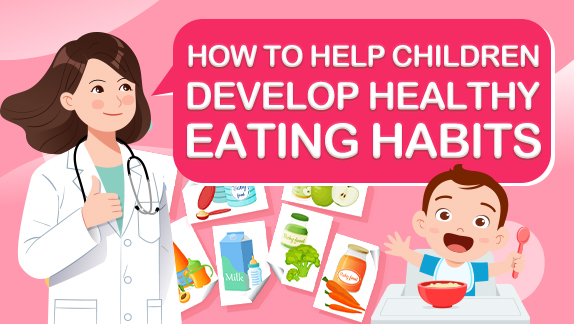Breastfeeding to boost your baby's health
Breast milk is often considered by the medical profession as the first live vaccine in your baby's life. It helps the baby establish a healthy condition and builds a healthy protection barrier. It also reduces the occurrence of infectious diseases in the baby. This is conducive to the prevention of chronic diseases in adulthood, but also promotes the postpartum recovery of mothers, reduces mother's risks of breast cancer and ovarian cancer and enhances the maternal bond with your child.
The Neonatal Department of Chongqing Health Center for Women and Children, or the CQHCWC, has long been advocating breastfeeding. Since the establishment of the breast milk bank in 2011, the amount of breast milk received has increased from 20,000 to 30,000 milliliters per month initially to more than 600,000 ml per month currently, guaranteeing the breastfeeding of more hospitalized babies. Breast milk is not only an irreplaceable nutrition in the healthy growth of babies, but it also plays an important role in the treatment of some premature infants and children with severe diseases.
The following are answers to some common questions on breastfeeding:
1. How do I prevent my breasts from swelling?
In daily feeding, pay attention to breastfeeding on demand, especially in the early postnatal period, letting the baby suck the breast frequently. If your baby cannot suck sufficiently, the mother can use her hands or a suction pump to extract her breast milk, ensuring that the breast-feeding posture and baby's receiving posture are correct.
Once breast swelling occurs, it is necessary to increase the number of breastfeeding sessions. You should be diligent with breast-feeding at night, ensuring timely milk extrusion, with breast-feeding on demand -- each time offering milk from one breast and then moving to the other side. To help mothers relax, cold compresses can be applied to the breasts after feeding to reduce edema.
2. How to prevent mastitis?
For frequent and effective feeding of babies, use different positions when breastfeeding, helping to drain milk from all parts of the breasts. Mothers need to breastfeed as needed and each time their baby sucks from one breast before moving to the other. Wear a loose breastfeeding bra, to prevent breast compression when lying side at night. Rest properly and avoid inappropriate massage of the breasts.
3. How to deal with cracked or sore nipples?
A correct breast position for the baby can effectively reduce nipple pain.
Once chafing occurs, let your baby correct his posture while breastfeeding, suckling the nipple on the healthy side first, then sucking the affected side.
In addition, after feeding, you can squeeze a drop of breast milk onto the nipple, expose the nipple for a while, and then dress after the milk dries; or apply a safe sheep fat cream to treat the nipple damage.
4. How to correct nipple illusion?
Mothers can first squeeze a little breast milk into the baby's mouth before feeding, encouraging the baby to try to suck the mother's nipple. Then let the baby suck the mother's milk, while using different postures to help baby’s sucking action. Alternatively, the mother uses a sucker to squeeze the breast milk out, with a small cup to feed the baby and gradually transitioning to breast feeding. Reduce or avoid continued use of rubber nipples or comfort nipples.

 CQHCWC: Nurture healthier futures for children
CQHCWC: Nurture healthier futures for children How to help children develop healthy eating habits
How to help children develop healthy eating habits Wechat
Wechat Weibo
Weibo